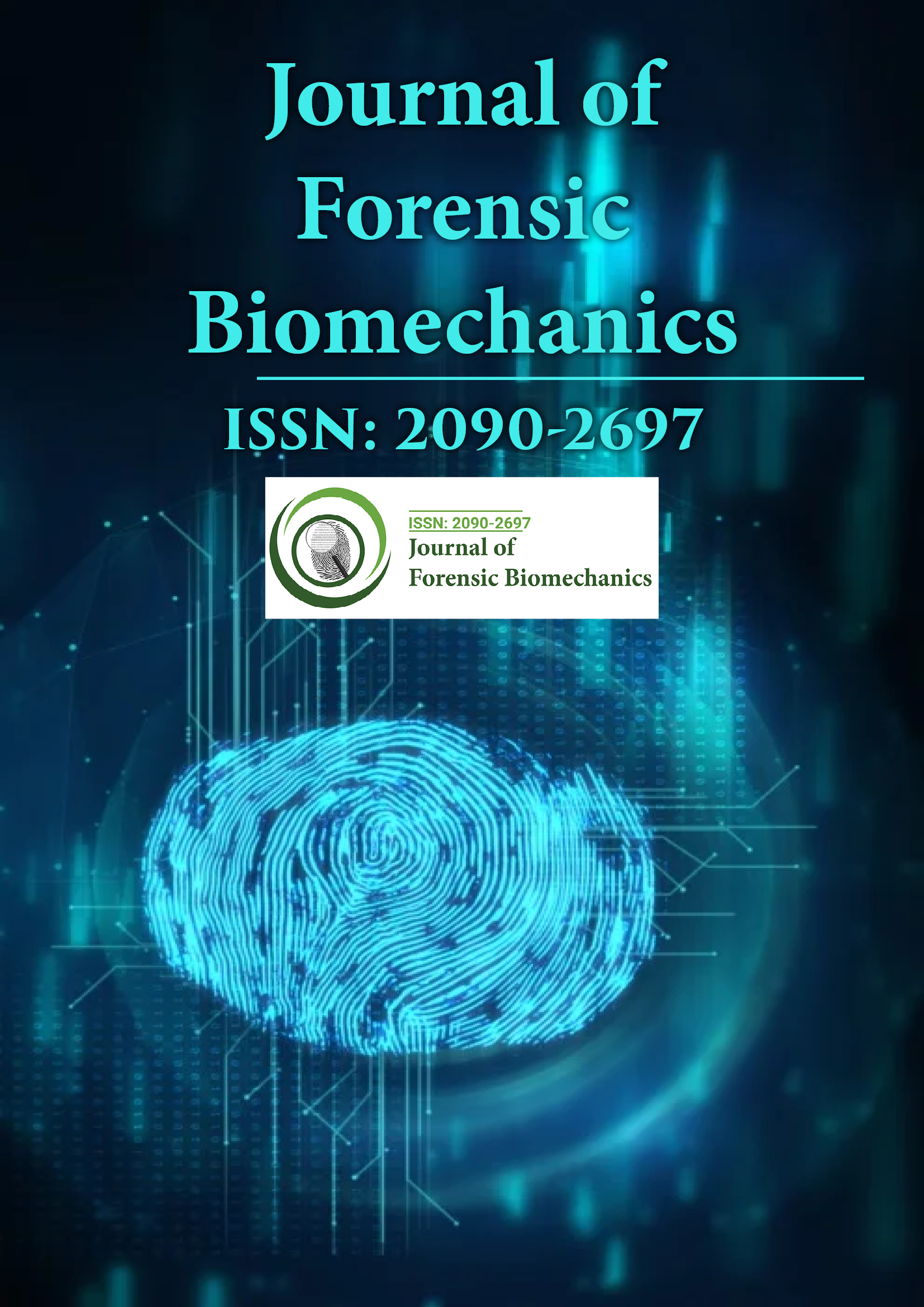Indexed In
- Genamics JournalSeek
- SafetyLit
- Ulrich's Periodicals Directory
- RefSeek
- Hamdard University
- EBSCO A-Z
- Geneva Foundation for Medical Education and Research
- Euro Pub
- Google Scholar
Useful Links
Share This Page
Journal Flyer

Open Access Journals
- Agri and Aquaculture
- Biochemistry
- Bioinformatics & Systems Biology
- Business & Management
- Chemistry
- Clinical Sciences
- Engineering
- Food & Nutrition
- General Science
- Genetics & Molecular Biology
- Immunology & Microbiology
- Medical Sciences
- Neuroscience & Psychology
- Nursing & Health Care
- Pharmaceutical Sciences
Perspective - (2023) Volume 14, Issue 2
Forensic Firearm Examination to Identify the Characteristics of weapons at a Crime Scene
Fenestra Anika*Received: 02-Mar-2023, Manuscript No. JFB-23-20506; Editor assigned: 06-Mar-2023, Pre QC No. JFB-23-20506 (PQ); Reviewed: 20-Mar-2023, QC No. JFB-23-20506; Revised: 27-Mar-2023, Manuscript No. JFB-23-20506 (R); Published: 03-Apr-2023, DOI: 10.35248/2090-2697.23.14.427
Description
The term "Forensic Firearm Examination" refers to the forensic process of identifying the characteristics of weapons or ammunition left at a crime scene. This field's experts attempt to connect bullets to weapons and weapons to people. They can search for fingerprints on the weapon and cartridges, as well as raise and record obliterated serial numbers in an attempt to locate the registered owner of a weapon. Exhausted ammunition can be traced back to a specific weapon by examining the unique striations impressed into a bullet from the barrel of a gun. These striations are caused by rifling inside firearm barrels. Rifling spins the bullet as it exits the barrel, improving precision. Although bullet striations are unique, microscopic striations in the weapon's barrel change slightly after each round fired. As a result, forensic ballistics examiners are not permitted to fire more than five shots from a weapon discovered at a scene.
Using a comparison microscope and newer 3-D imaging technology, known exemplars taken from a seized weapon can be compared to samples recovered from a scene Striation photos may also be added to regional databases. Additionally, the markings can be compared to other pictures in an effort to connect a single weapon to a number of crime scenes. Forensic firearm examiners, like all other forensic specialists, may be called to testify in court as expert witnesses.
Examination of the firearm
Cyanoacrylate fuming is used to recover fingerprints from the surface of firearms. Weapons are located in an especially planned fume hood that dispenses fumes evenly fairly than eliminating them. In a container, liquid superglue is heated until it becomes gaseous. The circulating fumes bind to the oils left by the fingerprint, turning it white. To increase the contrast between the white print and the weapon's finish, the resulting white print can be enhanced with fingerprint powder. Despite the fact that the fuming technique is commonly used on recovered firearms, recovering fingerprints from firearm surfaces is difficult due to the textured grip and overall condition of recovered weapons. If fingerprints are found, they can be analyzed using fingerprint databases like the Integrated Automated Fingerprint Identification System.
Touch DNA left by whoever handled the recovered weapon can also be tested on various parts of the recovered weapon. Tool mark analysis includes serial-number examinations. After the USA passed the Gun Control Act of 1968, serial numbers became commonplace. This law required that all firearms manufactured or imported into the country bear a serial number. Prior to 1968, many firearms lacked a serial number or had serial numbers that were not unique and were reused by a manufacturer on multiple firearms. In the event that the serial numbers on a recovered weapon have been changed or destroyed, examiners can attempt to locate the original serial numbers. In the event that the serial numbers on a recovered weapon have been changed or destroyed, examiners can attempt to locate the original serial numbers. Magnetic particle inspection and chemical restoration are the two main methods for serial number restoration. Because of the method's nondestructive nature, magnetic particle inspection is recommended first. If the magnetic particle inspection fails, the next step in the forensic analysis is chemical restoration.
Citation: Anika F (2023) Forensic Firearm Examination to Identify the Characteristics of weapons at a Crime Scene. J Forensic Biomech. 14:427.
Copyright: © 2023 Anika F. This is an open-access article distributed under the terms of the Creative Commons Attribution License, which permits unrestricted use, distribution, and reproduction in any medium, provided the original author and source are credited.

